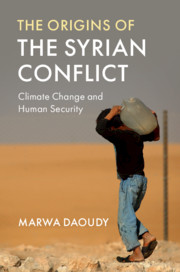6 - Syria
A (Hi)story of Vulnerability, Resistance, and Resilience
from II - Human–Environmental–Climate Security (HECS)
Published online by Cambridge University Press: 05 March 2020
Summary
Over the past few decades, a climate–conflict nexus has emerged which draws on narratives of collapse, and it has more recently been applied to the Syrian case. This book has questioned this line of reasoning given Syria’s history of climate, water, and food insecurity, arguing that government policies were at the heart of Syria’s vulnerabilities in the buildup to the uprising. Chapter 6 argues that the war in Syria has intensified the patterns of human insecurity outlined in the previous decade. Rather than building intrinsic resilience, the current postwar reconstruction phase is paving the way for regime resilience on the basis of structural inequalities while increasing the broader population’s vulnerability, particularly the refugee population. By centering the narrative on vulnerable populations, the HECS framework provides an in-depth analysis of the human-security impact of the environment, including poverty, unemployment, marginalization, and the failure of sustainable development. The HECS framework could, therefore, be helpful for others moving forward. It shows that policy choices matter for dealing with climate change. This understanding of climate vulnerability and resilience is a critical contribution to international policy debates on the need to optimize regional and local responses in the face of global warming.
Keywords
- Type
- Chapter
- Information
- The Origins of the Syrian ConflictClimate Change and Human Security, pp. 205 - 212Publisher: Cambridge University PressPrint publication year: 2020

